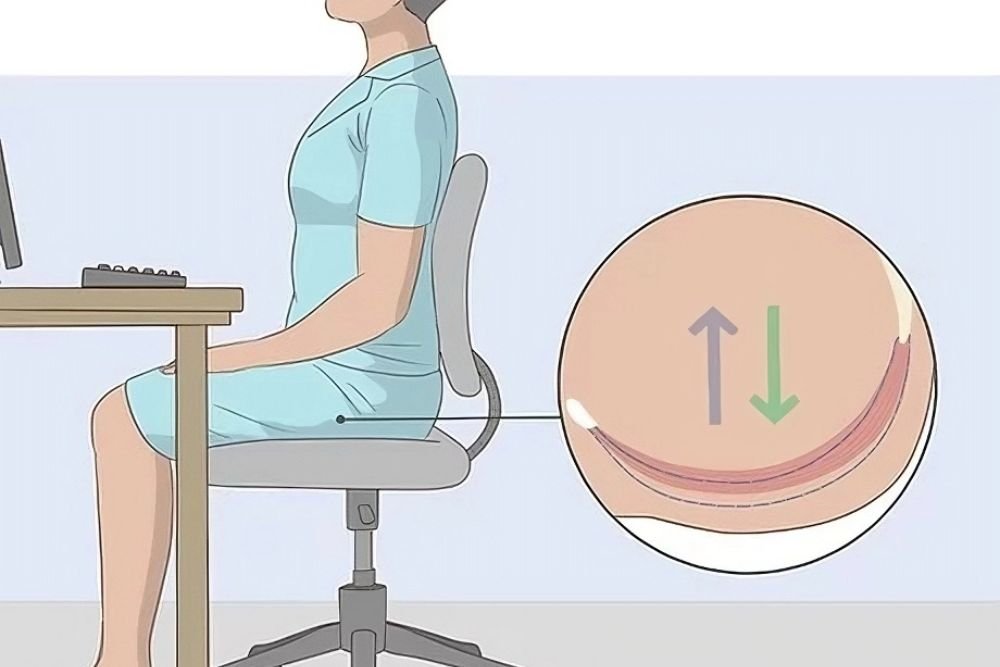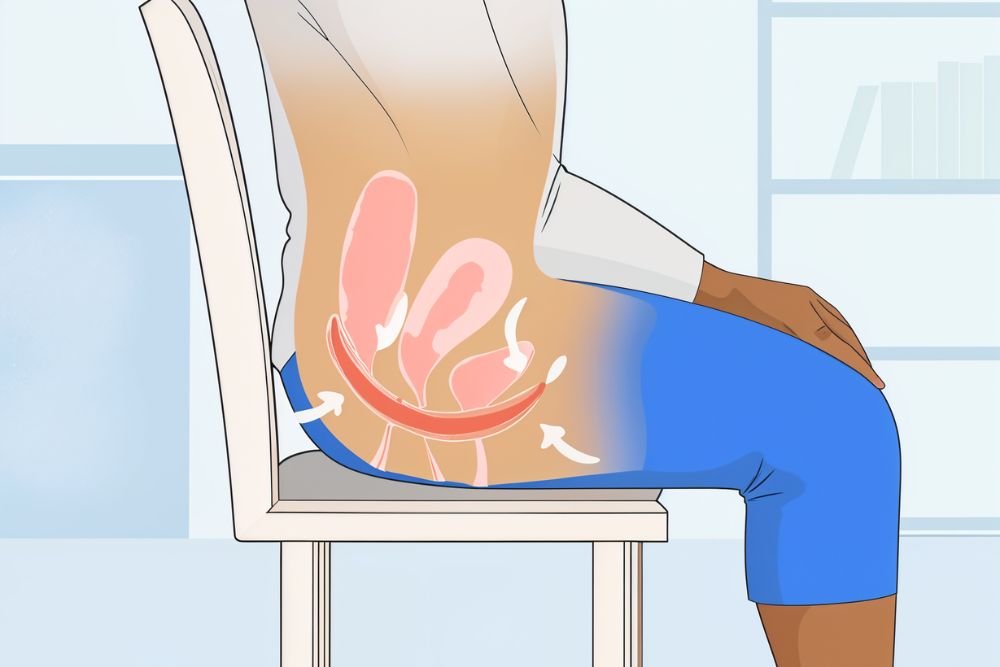Introduction to Pelvic Floor Health
When was the last time you thought about your pelvic floor? If the answer is “not often,” you’re not alone. Despite its importance, the pelvic floor often goes unnoticed—until it starts causing problems. From supporting vital organs to enhancing intimate health, your pelvic floor muscles are the unsung heroes of your body. Whether you’re navigating pregnancy, aging, or just aiming to improve your well-being, understanding and strengthening these muscles can transform your health.
In this article, we’ll explore six practical tips to optimize your pelvic floor exercises for women. This isn’t just about fitness; it’s about reclaiming control, confidence, and a sense of harmony with your body.
The Importance of Pelvic Floor Exercises for Women

What Are Pelvic Floor Muscles?
Picture a hammock. Your pelvic floor muscles are like that hammock, stretched across the base of your pelvis. They support key organs like the bladder, uterus, and rectum. These muscles also play a role in sexual function and control over bladder and bowel movements.
But what happens when the “hammock” sags? Weak pelvic floor muscles can lead to issues like urinary incontinence, pelvic organ prolapse, and diminished sexual satisfaction.
Why Women Need Strong Pelvic Floors
Women face unique challenges: childbirth, menopause, and even high-impact activities can weaken these muscles. By incorporating pelvic floor exercises for women into your routine, you’re not only preventing potential problems but also improving your overall quality of life.
Tip #1: Learn How to Engage Your Pelvic Floor Muscles
Finding the Right Muscles
Before diving into exercises, you need to locate your pelvic floor muscles. Imagine stopping the flow of urine midstream—those are your pelvic floor muscles at work. But don’t make this a regular practice during urination, as it can interfere with your bladder’s function over time.
The Art of Kegels
Kegel exercises are the cornerstone of pelvic floor exercises for women. Here’s a quick guide:
- Contract the pelvic floor muscles gently.
- Hold the contraction for 3–5 seconds.
- Release and relax for an equal amount of time.
- Repeat 10–15 times.
Remember, quality over quantity! Avoid engaging your thighs, buttocks, or abdomen—this is all about the pelvic floor.
Tip #2: Integrate Pelvic Floor Work Into Daily Activities
Multitasking With Purpose
Who says you need extra time in your day? Squeeze in pelvic floor exercises for women while brushing your teeth, commuting, or even watching TV. The discreet nature of these exercises means you can practice anytime, anywhere.
Mindfulness Matters
Incorporate mindfulness techniques into your routine. Breathing deeply while engaging your pelvic floor muscles enhances relaxation and focus, helping you build a stronger connection to your body.
Tip #3: Addressing Common Mistakes
Overtraining the Pelvic Floor
It’s tempting to overdo a good thing, but overtraining can lead to muscle fatigue and even pain. Balance is key. Like any workout, rest and recovery are vital for long-term success.
Ignoring Other Muscle Groups
Your pelvic floor doesn’t work alone—it’s part of a team that includes your core, glutes, and hips. Strengthening these complementary muscles enhances the effectiveness of pelvic floor exercises for women.
Tip #4: Explore Tailored Pelvic Floor Programs
Customized Approaches for Different Needs
Not all pelvic floors are created equal, and neither are their challenges. Women who are postpartum, menopausal, or dealing with specific health conditions like pelvic organ prolapse require tailored exercise regimens. Consulting a physical therapist who specializes in pelvic health can provide a personalized plan.
Apps and Resources to Guide You
Technology can be your best friend when it comes to staying consistent. Apps like Elvie Trainer or Kegel Trainer offer reminders, guided exercises, and even progress tracking to keep your pelvic floor exercises for women on track.
Tip #5: Combine Pelvic Floor Exercises with Other Activities
Yoga and Pilates for Enhanced Strength
Yoga and Pilates focus on core strength, flexibility, and balance, which naturally complement pelvic floor exercises for women. Poses like the Bridge, Cat-Cow, and Happy Baby are fantastic for engaging the pelvic floor.
- Bridge Pose:
- Lie on your back with knees bent and feet flat on the floor.
- Lift your hips towards the ceiling while gently engaging your pelvic floor.
- Hold for 3–5 seconds before lowering.
- Happy Baby:
- Lie on your back and grab the outer edges of your feet.
- Gently pull your knees towards your chest while maintaining a relaxed pelvic floor.
Strengthening Through Resistance Training
Incorporating light resistance training into your routine can also support pelvic floor health. Squats, lunges, and deadlifts—performed with proper form—engage your core and pelvic floor muscles effectively.
Tip #6: Lifestyle Changes to Support Pelvic Health

Diet and Hydration
What you eat and drink directly impacts your pelvic health. Foods rich in fiber, like fruits, vegetables, and whole grains, prevent constipation—a common cause of pelvic floor strain. Staying hydrated ensures your bladder functions optimally without overloading the pelvic floor.
Maintaining a Healthy Weight
Excess body weight increases pressure on the pelvic floor, weakening it over time. Regular exercise and a balanced diet are crucial for weight management, which in turn protects your pelvic health.
Also read: Pelvic Floor Exercises for Pregnant Women | 5 Key Benefits
Pelvic Floor Health for Men: A Quick Mention
While this article focuses on pelvic floor exercises for women, men can also benefit from these practices. Strengthening the pelvic floor improves bladder control, prostate health, and even sexual performance in men. Couples can support each other by incorporating these exercises into their routines together.
Overcoming Challenges in Your Pelvic Floor Journey
Staying Consistent
Life gets busy, and it’s easy to forget your exercises. Setting reminders, joining a class, or pairing exercises with daily activities can help make them a non-negotiable part of your day.
Celebrating Progress
Progress may feel slow at first, but don’t get discouraged. Like any workout, the benefits compound over time. Celebrate small victories, like better control over your bladder or improved posture, to stay motivated.
Benefits of Pelvic Floor Exercises for Women
Improved Bladder Control
One of the most immediate benefits of practicing pelvic floor exercises for women is improved bladder control. Whether you’re dealing with postpartum incontinence or occasional leaks when you sneeze or laugh, a strong pelvic floor can reduce or eliminate these issues.
- Stress Incontinence: Strengthening the pelvic floor prevents involuntary leaks triggered by pressure from coughing, sneezing, or exercise.
- Overactive Bladder: Regular pelvic floor work helps calm an overactive bladder, reducing the urgency and frequency of urination.
Enhanced Sexual Health
Pelvic floor strength plays a significant role in sexual health for women. Exercises increase blood flow to the region, heightening sensitivity and improving satisfaction. Additionally, a strong pelvic floor can lead to more intense and controlled orgasms.
- Increased Confidence: Feeling in control of your body fosters greater intimacy and self-assurance in romantic relationships.
- Improved Comfort: For women experiencing discomfort during intercourse, pelvic floor exercises can help relax and strengthen the muscles, alleviating pain.
Pelvic Floor Exercises During Pregnancy and Postpartum
Prenatal Benefits
Pregnancy places significant strain on the pelvic floor, but exercises can help manage the pressure. Strengthening these muscles during pregnancy supports the weight of the baby and reduces the risk of complications like pelvic organ prolapse.
- Easier Labor: Strong, flexible pelvic floor muscles can assist during delivery by providing better control and endurance.
- Faster Recovery: Women who maintain a healthy pelvic floor during pregnancy often experience quicker postpartum recovery.
Postpartum Recovery
Childbirth, whether vaginal or via cesarean, can weaken the pelvic floor. Postpartum pelvic floor exercises for women rebuild strength and aid in healing. Start with gentle Kegels before progressing to more intensive routines, always with guidance from a healthcare professional.
The Link Between Pelvic Floor and Core Strength
Understanding the Core Connection
Your pelvic floor is part of your “core canister,” working alongside the diaphragm, abdominal muscles, and back muscles. A weak pelvic floor can disrupt this balance, leading to poor posture, lower back pain, and reduced stability.
- Plank Modifications:
- Incorporate pelvic floor engagement while holding a plank position.
- Begin with shorter holds, focusing on activating the core without straining.
- Breathing Techniques:
- Diaphragmatic breathing works in harmony with pelvic floor exercises, enhancing core stability.
Preventing Back Pain
Strengthening the pelvic floor reduces stress on the lower back, creating a stable foundation for movement and daily activities. Women who perform pelvic floor exercises often report fewer instances of back pain.
Common Myths About Pelvic Floor Exercises for Women
“Only Older Women Need Them”
While pelvic health concerns increase with age, women of all life stages benefit from pelvic floor exercises for women. From young athletes to postpartum moms, everyone can gain from building strength in this area.
“It’s All About Kegels”
Although Kegels are a staple, they’re not the only exercise for the pelvic floor. Incorporating full-body movements, like yoga and resistance training, creates a comprehensive approach to pelvic health.
“If I Don’t Have Symptoms, I’m Fine”
Many pelvic floor issues develop silently over time. Proactively strengthening these muscles prevents problems before they occur, ensuring long-term health and well-being.
Lifestyle Habits to Support Pelvic Floor Health
Regular Exercise Beyond Kegels
While pelvic floor exercises for women are essential, a well-rounded fitness routine enhances overall pelvic health. Low-impact exercises like swimming, walking, and cycling strengthen your body without putting unnecessary pressure on the pelvic floor.
- Avoid High-Impact Activities: Exercises like running or jumping can strain a weakened pelvic floor. Modify your routine to include gentler options if you’re recovering or experiencing symptoms.
- Incorporate Stretching: Flexibility exercises like yoga help maintain balance and prevent tightness in surrounding muscles.
Stress Management and Pelvic Health
Chronic stress often manifests physically, leading to muscle tension—including in the pelvic floor. Learning to relax these muscles is just as important as strengthening them. Techniques like meditation, deep breathing, and progressive muscle relaxation are effective tools.
- Guided Meditation:
- Apps like Calm or Headspace offer specific meditations that help you focus on body awareness, including pelvic tension.
- Physical Relaxation:
- Lying flat and consciously relaxing the pelvic floor for a few minutes daily can help release tightness.
Monitoring Your Progress and Seeking Help
Tracking Your Improvement
Consistency is the key to success. Tracking your progress can keep you motivated and highlight improvements. Journaling how often you perform pelvic floor exercises for women and any changes in symptoms is a simple but powerful tool.
When to Seek Professional Guidance
If you’re not seeing improvements or experience discomfort during exercises, don’t hesitate to consult a healthcare provider. Pelvic floor physical therapists specialize in creating tailored programs and addressing specific concerns.
Embrace Your Pelvic Floor Journey
Your pelvic floor is more than just a group of muscles; it’s the foundation of your health and well-being. Incorporating pelvic floor exercises for women into your daily routine can lead to better bladder control, enhanced intimacy, and improved overall quality of life.
Now it’s your turn. What’s been your experience with pelvic floor exercises? Are there challenges or triumphs you’d like to share? Join the conversation in the comments below. Let’s create a community of support, learning, and empowerment.
Together, we can prioritize pelvic health—one exercise at a time.